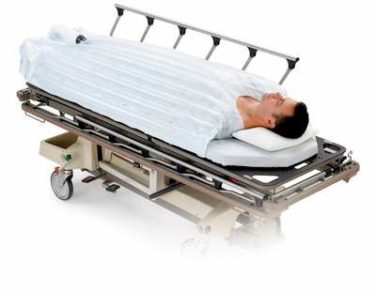EXPERT ANALYSIS FROM THE PAS ANNUAL MEETING
SAN DIEGO (FRONTLINE MEDICAL NEWS) – Any child diagnosed with neonatal diabetes should undergo genetic testing for monogenic mutations as quickly as possible, and a case can be made for switching from insulin injections to empiric oral sulfonylurea therapy while awaiting the test results, Dr. Siri A. Greeley asserted at the annual meeting of the Pediatric Academic Societies.
“I think the situation is analogous to congenital hypothyroidism, where early treatment is really important while the brain is still developing. I think sulfonylureas’ effects on brain function are age dependent. That’s one of my main rationales for starting sulfonylurea therapy early on, especially if you’re having trouble getting the genetic testing done,” explained Dr. Greeley, a pediatric endocrinologist at the University of Chicago.
Diabetes diagnosed before age 6 months is nearly always genetic in origin. Heterozygous activating mutations of the adenosine triphosphate (ATP)-sensitive potassium channel (KATP) cause up to 60% of diabetes diagnosed before 6 months of age. Sulfonylurea therapy is typically highly effective in these children, and the sooner they start therapy the better their outcomes, both in terms of glycemic control and neurodevelopmental endpoints, he said.
In his recent retrospective observational study of 58 patients enrolled in the University of Chicago Monogenic Diabetes Registry who had neonatal diabetes involving the KCNJ11 subunit of the KATP channel, hemoglobin A1c fell from an average of 8.5% on insulin to 6.2% after the transition to sulfonylurea therapy. Age at initiation of sulfonylureas showed a linear correlation with the dose required at follow-up. Indeed, all 10 patients who needed additional glucose-lowering medications along with their sulfonylurea had started on sulfonylurea therapy at age 13 years or older ( Diabetologia 2015 April 17 [Epub ahead of print] PMID:25877689 ).
A likely possible explanation for the observed decline in sensitivity to sulfonylureas with an older starting age is that insulin-treated patients experience loss of beta cell mass over time, according to Dr. Greeley.
A syndrome known by the acronym DEND, for developmental delay, epilepsy, and neonatal diabetes, affects 20%-30% of patients with neonatal diabetes related to mutations in the KATP channel. These channels are widely expressed in the brain.
The first hint that early initiation of sulfonylureas in children with KATP-related neonatal diabetes may have beneficial neurodevelopmental effects has been provided by a study Dr. Greeley and coinvestigators conducted in 19 patients, aged 2-20 years, with KATP channel mutations. Eight had diabetes only, eight had DEND, all eight of whom had potent V59M/A mutations, and three had other KATP-related mutations associated with milder neurodevelopmental impairment. Upon testing via the age-standardized Beery-Buktenica Developmental Test of Visual-Motor Integration, the investigators found that the group with diabetes only had normal scores while those with V59M/A mutations scored quite low. The key finding: Age at sulfonylurea initiation was inversely associated with scores on the Beery test. Those who started on the medication before 1 year of age had near-normal scores ( Diabetes Care 2012;35:2086-8 ).
That’s not definitive evidence, Dr. Greeley observed. It needs to be confirmed with larger patient numbers. But it does warrant at least considering preemptive sulfonylurea therapy while awaiting genetic test results in patients with neonatal diabetes, he said.
He noted that in his retrospective study of 154 subjects diagnosed with diabetes before age 6 months, barriers to expeditious genetic testing, mainly consisting of obstacles created by insurance companies, resulted in a median time between clinical diagnosis and genetic diagnosis of 10.4 weeks ( J. Clin. Endocrinol. Metab. 2014;99:E2709-14).
Neonatal diabetes is a rare condition. Most of the culprit mutations are de novo, not inherited. With an incidence of roughly 1 in 100,000 births, the rate is in line with other disorders that are part of standard newborn screening, such as maple syrup urine disease, Dr. Greeley observed.
More than 70% of all cases of neonatal diabetes are due to mutations at one of four loci: 6q24, KCNJ11, INS, or ABCC8. It’s important to order genetic testing from a laboratory that includes a comprehensive 6q24 analysis in its panel; many don’t, creating the potential for a false-negative test result, the pediatric endocrinologist cautioned.
Dr. Greeley’s research is funded by the National Institutes of Health, the American Diabetes Association, and the Kovler Family Foundation. He reported having no financial conflicts.




